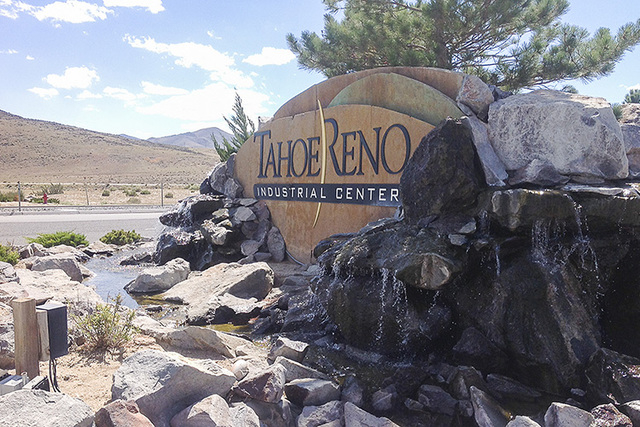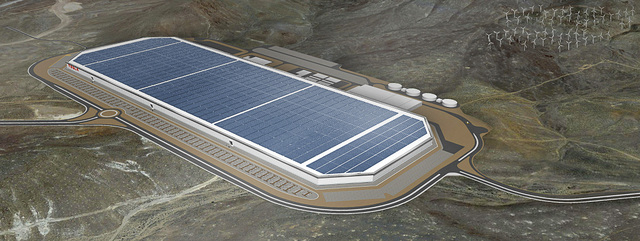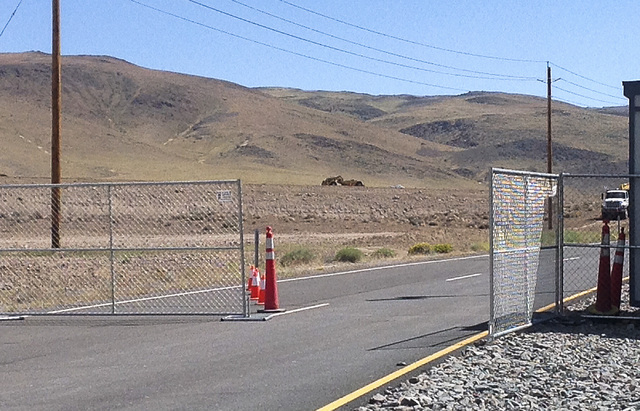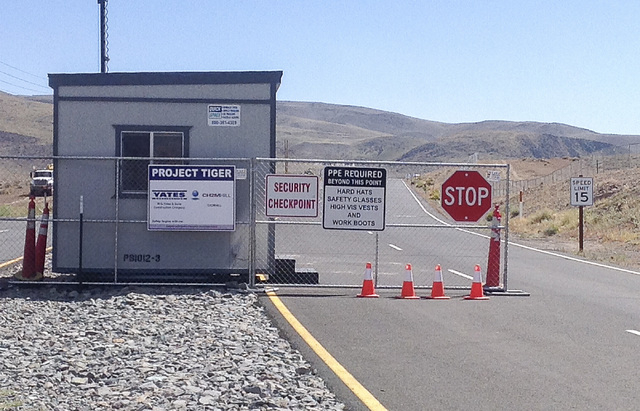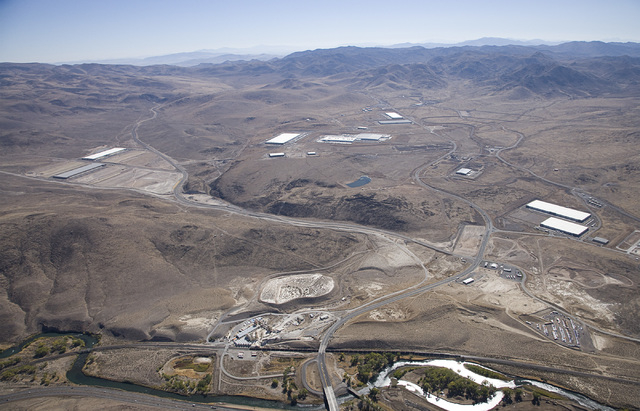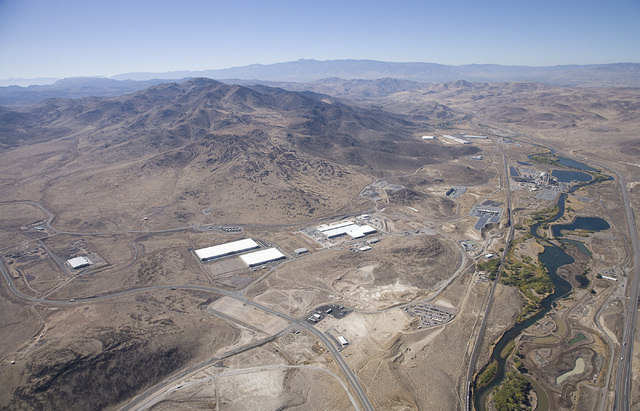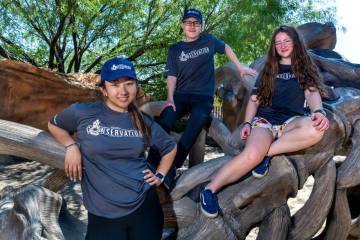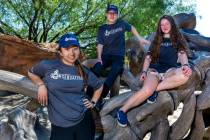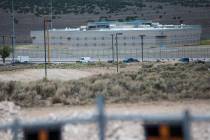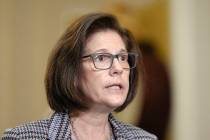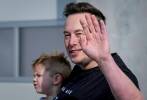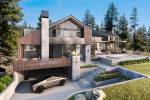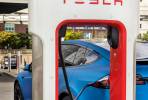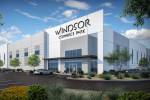Tesla deal sparks development rush to Reno area
Word that Tesla Motors is taking up residency in Northern Nevada has companies around the world doing a double-take of the Reno-Sparks area and inquiring about what the Silver State has to offer, an economic development official said.
“It puts us not only on the national radar for site selectors and companies looking for locations in the West, but we’re getting calls from across the globe — Belgium, Germany, China,” said Mike Kazmierski, president and chief executive officer of the Economic Development Authority of Western Nevada.
“What is often missed is all the secondary jobs. The companies that need to or want to be in the vicinity of Tesla,” Kazmierski said. “And then many other companies that just want to be in the area now that Tesla has identified this region as a great place for advanced manufacturing.”
State lawmakers approved and Gov. Brian Sandoval signed a package of bills authorizing $1.3 billion in tax breaks and other perks for the California electric car maker on Sept. 11, a week after Tesla announced it had chosen Nevada over four other states to build a massive battery factory.
While the wisdom — or folly — of the incentive package will be debated for years, Tesla’s arrival cannot be underestimated in a state that was hard hit by the recession, economic development officials said.
“Tesla moving to Nevada will create a domino effect as many more businesses will follow,” agreed Robert Hooper, executive director of the Northern Nevada Development Authority.
Billionaire Elon Musk, Tesla founder and chief executive, said the size of the tax forgiveness — which allows Tesla to operate in the state tax free for a decade and avoid some for 20 years — wasn’t the biggest reason for coming to Nevada. Rather, he said, it was the state’s ability to “do things quickly” and “get things done.”
‘IT’S A MARATHON’
After the efforts of months-long negotiations and political maneuverings were signed, sealed and delivered, attention turned quickly to the wind-swept high desert in northern Storey County, where Tesla, in partnership with Japan’s Panasonic Corp., will build the world’s largest lithium ion battery factory 20 miles east of Reno.
Lance Gilman, a partner in the sprawling, 165-square-mile Tahoe-Reno Industrial Center where Tesla will locate, was on his way home around midnight after that long day at the Nevada Legislature when he received an email from Tesla officials.
Plan to meet in early morning.
“There wasn’t time to take a breath,” he said. “It’s a marathon.”
Tesla is wasting no time on the project that officials say is key to mass marketing its next generation of electric cars, the Model 3, expected out in 2017.
Security guards at the gated “Project Tiger” construction project keep curious onlookers at bay. Off in the distance, humongous earth movers kick up clouds of dust as they maneuver across the desert.
Down the road, a lone wild horse, one of about 1,000 that roam the industrial center’s grounds, grazes on scattered brush.
A construction timeline for the battery plant, though still being worked out, will be fast and furious.
“Whatever the time scale is for conventional construction now, I think we probably are going to be on the leading edge of going fast,” Diarmuid O’Connell, Tesla vice president of business development, said in a recent telephone interview.
A massive construction pad for the 5 million-square-foot building was prepared this summer in less than a month, a feat Gilman described as a “biblical.”
“It’s staggering. It’s biblical in size. The project is, Tesla is … it’s hard to comprehend how big it is,” he said.
Musk has said the battery factory will be larger than all other lithium ion battery plants in existence. The company says making a cheaper, longer-lasting battery will bring down the cost of the Tesla cars, making them more affordable at around $35,000, roughly half the current sticker price.
At roughly a mile long and 70 feet tall, the plant will be diamond shaped, pointed north to allow for global positioning system alignment of equipment. Solar panels on the rooftop will supply energy from the sun.
“It’s really going to be an imposing monument to industrial innovation,” O’Connell said.
Musk, appearing Sept. 4 at a news conference with Sandoval, said the factory itself will be a “wonder to behold.”
“Elon, he has a very acute design orientation,” O’Connell said. “The scale of this facility is massive and its nature is industrial. But his design aesthetics is such that he also wants it to look cool and interesting, as well as being a logical layout for the operation within it.”
JOBS FOR NEVADA
A Tesla team has been on site for weeks, overseeing grading work. O’Connell said the company is working on setting up a Web portal to inform subcontractors on project details and how to submit bids.
“Are we focused on hiring locally? The answer is absolutely,” O’Connell said.
Legislation requires at least half of workers hired by Tesla to be Nevadans, though it provides for waivers if the company is unable to find qualified workers.
The factory, once completed, is projected to employ 6,500 workers.
“As would be logical in any event, we’re going to want to access first and most the folks who are local, because that’s a more efficient, and generally speaking, better economic proposition for both parties,” O’Connell said.
Vertical work, where the building itself begins to take shape, could begin by the end of the year, or early in 2015, he said.
“This is a strategic project for the company,” he said. “I want to make sure that our baby comes to fruition as quickly and as well as possible.”
The first to be hired will be construction workers, an estimated 3,000, according to the governor’s economic development team. Hiring for factory jobs could begin in the spring.
Economic analysis of the project released by the governor’s office estimated factory worker wages at $25 an hour, plus health benefits.
A report from the U.S. Bureau of Labor Statistics said that in May 2013, workers in the Reno-Sparks metropolitan area had an average hourly wage of $20.64.
THE NEIGHBORHOOD
Tesla is moving into a neighborhood reserved for industrial, manufacturing and distribution heavyweights — companies such as U.S. Ordnance, Alcoa, Wal-Mart, PetSmart, Kal-Kan and Zulily, just to name a few.
The industrial center, which encompasses about 60 percent of Storey County’s land mass, is the largest in the nation. Since it signed its first tenant in 2000, 165 companies have set up operations, doing business in about 14 million square feet under roof, Gilman said.
Storey County itself has a population of about 4,000, concentrated in and around the historic mining town of Virginia City.
The industrial park has its own emergency services center, power generating plants and water treatment facility. With the park zoned for heavy industrial and no residential neighbors to complain about land use, noise and heavy truck traffic, permits for construction can be fast-tracked.
“In a 5,000-acre component, we can build 100 million square feet under roof and employ a city the size of Carson City,” said Gilman, who is also a Storey County commissioner.
“That’s 50,000 people,” he said, before stating the obvious: “We’re huge.”
Kazmierski said the Reno-Sparks region saw heightened interest from companies when Apple announced it would build a data center in the area two years ago.
“What Apple did was help people look at us,” Kazmierski said. “It helped when we worked with Tesla, giving us credibility working with Tesla.”
Now that Tesla is coming, the business world is taking note. The challenge, Kazmierski said, is to turn that interest into jobs.
“If we can get them to visit, and our phones have been ringing off the hook … once they see what we have here, 70 percent of the time they decide to come here,” Kazmierski said.



